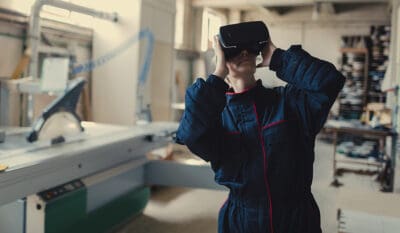Think of a child learning to play chess 200 years ago, studying the game by playing or reading about it. Today, anyone can experience dozens of games and hundreds of chess problems in a single day, allowing for exponentially more learning opportunities in a much shorter time. (Poker is another good example here.)
This is the central experience and opportunity of immersive learning today—controlled learning situations that simulate real world experiences, enabling effective and efficient learning by providing safe environments with unlimited tries and do-overs. We can now learn better and faster.
Immersive environments allow people to learn complex skills rapidly and effectively. They can help train a manager how to better interact with employees, and provide new skills to a frontline worker responding to an angry customer.
Today, we see learning and development at a tipping point, where the technological capabilities are sophisticated enough, and the cost of development and adoption are low enough, that immersive learning will transform every aspect of education, work, training, development—you name it.



